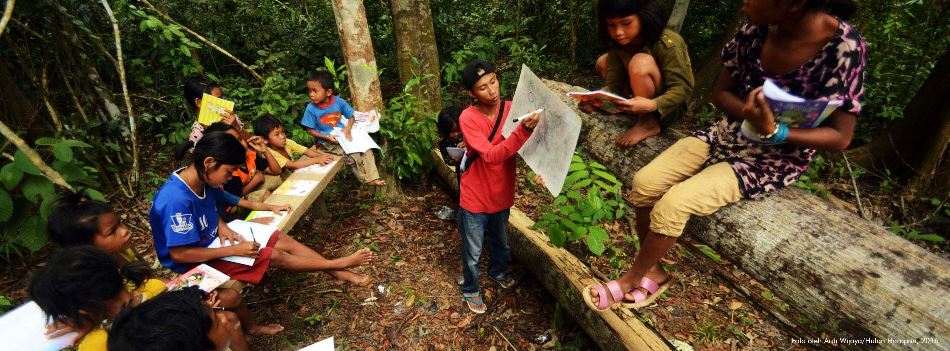A common way to restore a degraded forest is to plant seedlings and nurture these into full trees. Indeed, to most people restoration and tree-planting (with native species) are virtually synonymous.
Planting and nurturing tree seedlings over a wide area, however, can be an expensive and labor-intensive affair. Not to mention the decades or even centuries it takes before seedlings grow into trees.
Another common path to restoration is to simply protect a degraded forest from further degradation, often by fencing it off. Over time, lost tree cover will return through natural regeneration. This option is a relatively inexpensive, but it can also take centuries to achieve full restoration and the environmental benefits it brings.
According to Rhett D. Harrison, tropical forest ecologist with the World Agroforestry Centre (ICRAF), there might be a middle road to the restoration of tropical forests: thinning a recovering forest.
 The research was conducted over a 280-hectare area in the Harapan Rainforest, an Ecosystem Restoration Concession in Sumatra, Indonesia. Harapan Rainforest is a 98,555-hectare area of rainforest in the province of Jambi, Sumatra, Indonesia. The British Royal Society for the Protection of Birds is campaigning to plant one million new trees to renew the forest because of its rich wildlife, which is vulnerable to the logging industry.
The research was conducted over a 280-hectare area in the Harapan Rainforest, an Ecosystem Restoration Concession in Sumatra, Indonesia. Harapan Rainforest is a 98,555-hectare area of rainforest in the province of Jambi, Sumatra, Indonesia. The British Royal Society for the Protection of Birds is campaigning to plant one million new trees to renew the forest because of its rich wildlife, which is vulnerable to the logging industry.
Despite having been selectively logged in the 1970s, the forest is still considered among the most biodiverse on the planet, containing about 20% of the remaining lowland forests of Sumatra. It provides habitat to over 300 species of bird, as well as the critically endangered Sumatran tiger and Sumatran rhinoceros. The Harapan Rainforest is managed under a 95-year license by a group of NGOs comprising Burung Indonesia, Birdlife International, and the Royal Society for the Protection of Birds.
Thinning has been practiced by temperate foresters for hundreds of years, and is relatively straightforward in monospecific stands. But it is rarely conducted in tropical forests where more nuanced management, based on an understanding of species regeneration niches, is required. Some attempts at managing stand composition in tropical forests through the selective removal of large stems of undesirable species have been made.
However, removal of large trees creates large gaps and usually results in a proliferation of pioneers. Hence, it is unlikely to be a suitable approach for restoration. Removal of other types of competing vegetation, such as lianas, bamboo and dense shrubs, has been effectively used to accelerate recovery of degraded tropical forests in situations where these are abundant. But in forests that have been logged or are recovering from shifting cultivation, an over-abundance of pioneers is a much more widespread condition.
See related article by Rhett Harrison in PARTNERS.
See Harapan Rainforest website (in Indonesian) + photo credits.

